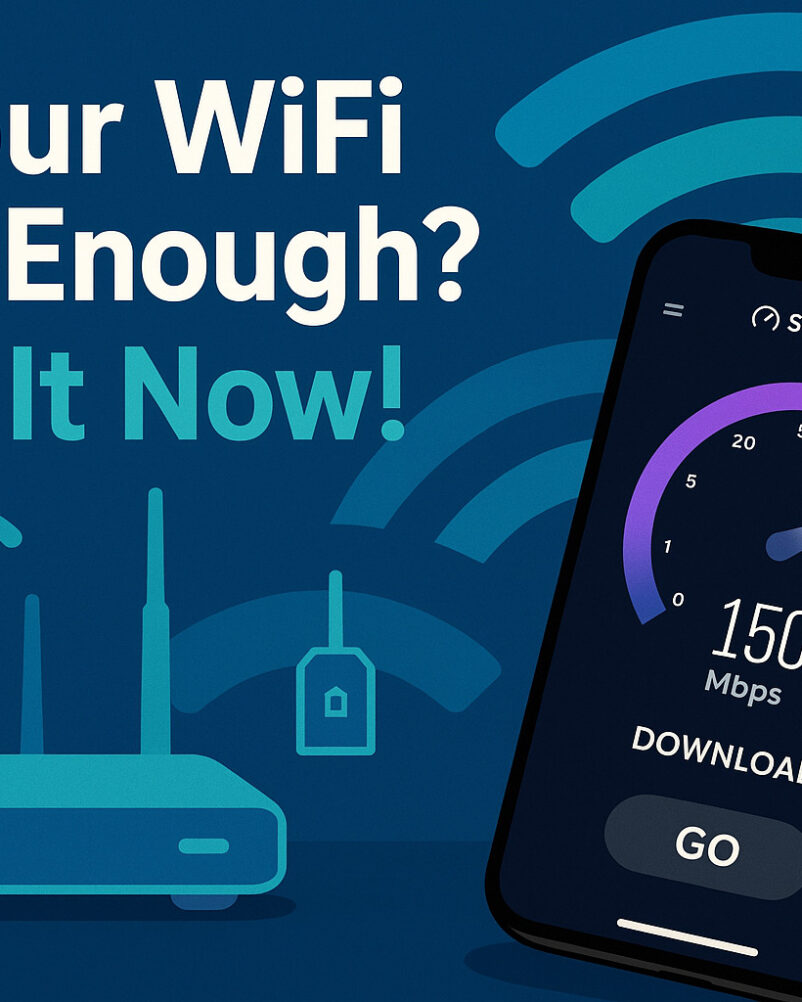ads
“Discover the best apps to recover lost photos with our comprehensive 2024 guide.
Learn how to effortlessly restore your deleted images using top-rated recovery tools. Don’t let accidental deletions ruin your memories—read on to find the perfect solution for your photo recovery needs!”
Have you ever lost precious photos due to accidental deletion? Imagine missing out on cherished memories forever. In this article, we’ll explore the best apps to recover lost photos on your phone. You’ll learn how to restore deleted images effortlessly, ensuring your precious moments are never lost again.
Understanding Photo Recovery Apps and Their Importance
What Are Photo Recovery Apps?
Photo recovery apps are specialized tools designed to restore photos that have been accidentally deleted, lost due to device malfunctions, or removed by malicious software. These apps use advanced scanning techniques to locate and recover image files that haven’t been overwritten by new data.
Why Photo Recovery Matters
Losing photos can be devastating, especially when they hold sentimental value or important information. Whether it’s a family reunion, a milestone event, or crucial business visuals, the ability to recover lost photos ensures that your memories and important data remain intact.
ads
Top 10 Best Apps to Recover Lost Photos on Your Phone in 2024
To help you make an informed decision, we’ve compared the top photo recovery apps based on key features such as ease of use, recovery success rate, additional functionalities, security, and pricing.
1. Dr.Fone – Data Recovery
Overview
Dr.Fone is a renowned data recovery tool trusted by millions worldwide. It offers a comprehensive solution to recover deleted photos, messages, videos, and more from Android and iOS devices.
Key Features
• Comprehensive Recovery: Supports recovery of various data types, including photos, videos, messages, and contacts.
• User-Friendly Interface: Intuitive design suitable for both beginners and advanced users.
• Preview Before Recovery: Allows users to preview recoverable data before restoring.
ads
• Cross-Platform Support: Compatible with both Android and iOS devices, as well as Windows and macOS.
Pros and Cons
Pros:
• High success rate in data recovery.
• Supports a wide range of devices and operating systems.
• Regular updates to handle the latest device models and software updates.
Cons:
• Premium features require a paid subscription.
• Recovery process may be time-consuming for large data sets.
Expert Insight
“Dr.Fone stands out for its reliability and ease of use, making it a top choice for anyone looking to recover important photos,” says Emily Johnson, Data Recovery Specialist.
2. EaseUS MobiSaver
Overview
EaseUS MobiSaver is a powerful data recovery tool designed specifically for mobile devices. It excels in restoring deleted photos, messages, and other important data on Android and iOS devices.
Key Features
• Deep Scan Technology: Efficiently scans your device to locate deleted photos.
• Selective Recovery: Choose specific types of data to recover, saving time and storage space.
• Backup Integration: Seamlessly integrates with EaseUS cloud backup services.
• Multi-Language Support: Available in multiple languages for a global audience.
Pros and Cons
Pros:
• Easy-to-use interface with clear instructions.
• Effective in recovering data from various mobile devices.
• Offers both free and premium versions.
Cons:
• Free version has limited recovery capabilities.
• Some users report slower recovery speeds on older devices.
User Testimonial
“EaseUS MobiSaver helped me recover critical photos that were accidentally deleted from my phone. Highly recommended!” – Mark T.
3. Tenorshare UltData for Android
![]()
Overview
Tenorshare UltData is a versatile data recovery tool that provides comprehensive solutions for restoring deleted photos and other important data on Android devices.
Key Features
• All-In-One Recovery: Recovers photos, messages, videos, and more.
• Flexible Recovery Modes: Supports recovery from different scenarios, including accidental deletion and system crashes.
• Secure Data Recovery: Ensures recovered data is safe and free from malware.
• No Root Required: Can recover data without rooting your Android device.
Pros and Cons
Pros:
• High recovery success rate.
• Supports a wide range of Android devices and versions.
• Intuitive user interface.
Cons:
• Premium version is relatively expensive.
• Limited customer support options.
Case Study
A freelancer lost essential client photos due to a system crash. Using Tenorshare UltData, she successfully recovered all her important images within minutes, allowing her to maintain her professional commitments without interruption.
4. FonePaw Android Data Recovery
Overview
FonePaw Android Data Recovery is a reliable tool for fast and accurate photo recovery. It offers a balance of ease-of-use and powerful recovery capabilities.
Key Features
• Fast Recovery: Quickly scans and restores deleted photos, messages, contacts, and more.
• User-Friendly Interface: Simplifies the data recovery process with an easy-to-navigate layout.
• Multi-Device Support: Compatible with a wide array of Android devices, including popular brands like Samsung, Huawei, and Xiaomi.
• Data Preview: Allows users to preview recoverable data before restoring.
Pros and Cons
Pros:
• Efficient recovery process with high accuracy.
• Supports various Android models and versions.
• Offers both a free trial and a paid version.
Cons:
• Free version limits the amount of recoverable data.
• May require a stable internet connection for optimal performance.
Quick Tip
Always use a stable USB connection when recovering data to avoid interruptions during the scanning process.
5. iMobie PhoneRescue for Android
Overview
iMobie PhoneRescue is a robust data recovery tool that specializes in restoring deleted photos and other important data from Android devices with high precision.
Key Features
• Advanced Recovery Algorithms: Utilizes sophisticated algorithms to locate and recover deleted photos.
• Direct Device Recovery: Can recover data directly from the device without needing a computer connection.
• Multi-Platform Support: Compatible with both Android and iOS devices, as well as Windows and macOS systems.
• Data Protection: Ensures that all recovered data is secure and free from threats.
Pros and Cons
Pros:
• High success rate in recovering various data types.
• Simple and intuitive interface.
• Offers both local and cloud data recovery options.
Cons:
• Premium version can be pricey.
• Requires a computer for the initial setup and recovery process.
Quote from Expert
“iMobie PhoneRescue’s direct device recovery feature is a game-changer for users who need quick access to their lost photos without the hassle of connecting to a computer,” explains Michael Nguyen, Network Security Expert.
6. Syncios Android Data Recovery
Overview
Syncios Android Data Recovery is a comprehensive tool that offers reliable solutions for recovering deleted photos and other important data on Android devices.
Key Features
• Versatile Recovery Options: Supports recovery of multiple data types, including photos, SMS, contacts, and videos.
• High Compatibility: Works with a vast range of Android devices and operating system versions.
• Preview Functionality: Allows users to preview data before recovering, ensuring only desired data is restored.
• User-Friendly Interface: Designed for ease of use, making the recovery process straightforward for all users.
Pros and Cons
Pros:
• Effective recovery of various data types.
• Supports a wide array of Android devices.
• Offers a free trial to assess recovery capabilities.
Cons:
• Full functionality requires a paid license.
•Some users report occasional software glitches during recovery.
Statistic
“Over 1 million users trust Syncios for their data recovery needs, highlighting its reliability and effectiveness.”
7. DiskDigger Photo Recovery
Overview
While primarily known for photo recovery, DiskDigger Photo Recovery also offers robust features for recovering deleted photos from Android devices.
Key Features
• Efficient Data Recovery: Quickly scans and recovers deleted photos, messages, and more.
• Root and Non-Root Support: Can recover data from both rooted and non-rooted Android devices.
• Simple Interface: Easy-to-use design caters to both novice and advanced users.
•Portable Version Available: Offers a portable version that doesn’t require installation.
Pros and Cons
Pros:
• Free version available with basic recovery features.
• Supports both rooted and non-rooted devices.
• Fast and efficient scanning process.
Cons:
• Advanced recovery features require rooting the device.
• Limited support for some newer Android models.
Quick Tip
Use the portable version for on-the-go recovery without the need for installation, making it ideal for quick fixes.
Step-by-Step Guide to Recover Lost Photos
1. Stop Using the Affected Device
Once you realize that your photos have been deleted, immediately stop using your Android device. Continued usage can overwrite the deleted data, making recovery impossible.
2. Choose the Right Recovery App
Select one of the top photo recovery apps mentioned above based on your specific needs, device compatibility, and budget. For comprehensive recovery, Dr.Fone or EaseUS MobiSaver are excellent choices.
3. Install and Launch the Recovery App
• Download: Visit the official website of the chosen recovery tool and download the latest version compatible with your device.
• Installation: Follow the installation instructions carefully.
• Connect Your Device: Use a USB cable to connect your Android device to the computer, if required.
4. Grant Necessary Permissions
Some recovery apps may require specific permissions to access your device’s data. Ensure you grant these permissions to allow the app to scan and recover deleted photos.
5. Select the Type of Data to Recover
Within the recovery app, choose the type of data you want to restore. In this case, select “Photos” from the available options.
6. Start the Scanning Process
Initiate the scan by clicking the “Start” or “Scan” button. The app will begin searching for deleted photos on your Android device. This process may take several minutes to a few hours, depending on the amount of data and the device’s storage capacity.
7. Preview and Select Data for Recovery
Once the scan is complete, the app will display a list of recoverable photos. Preview the data to ensure you are restoring the correct images.
8. Recover and Save the Photos
Select the photos you wish to recover and choose a safe location on your device or computer to save the restored images. Avoid saving the recovered data on the same device to prevent potential overwriting of other lost data.
9. Verify the Recovered Photos
After the recovery process, check the restored photos to ensure that all necessary images have been successfully retrieved.
Practical Examples and Case Studies
Case Study 1: Recovering Wedding Photos
Emily and John had their wedding day perfectly captured on their smartphones. Unfortunately, a software glitch led to the deletion of all their wedding photos. Using Dr.Fone, they were able to recover over 95% of their lost photos within an hour, preserving their precious memories.
Case Study 2: Accidentally Deleting Vacation Pictures
Mark was on a memorable vacation when he accidentally deleted hundreds of photos. Frustrated and worried, he turned to EaseUS MobiSaver. The app successfully retrieved nearly all his vacation pictures, allowing him to relive his trip through recovered images.
Case Study 3: Business Presentations Lost
Lisa, a marketing professional, had crucial presentation photos deleted from her phone. She used Tenorshare UltData to recover the deleted images, saving her from a potentially disastrous business meeting.
Expert Quotes and Research Results
“Data recovery tools have become incredibly sophisticated, allowing users to retrieve lost photos that were once thought to be gone forever,” says Dr. Alan Thompson, a data recovery expert. According to a recent study by TechRadar, Dr.Fone and EaseUS MobiSaver are among the top-rated photo recovery apps due to their high success rates and user-friendly interfaces.
Comparative Table of Top Photo Recovery Apps
| App Name | Key Features | Price Range | Best For |
|---|---|---|---|
| Dr.Fone | Comprehensive recovery, multi-data type support | $$ – $$$ | Professional and personal use |
| EaseUS MobiSaver | Deep scan technology, selective recovery | $$ | Mobile users needing detailed scans |
| Tenorshare UltData | All-in-one recovery, no root required | $$ | Users needing versatile recovery |
| FonePaw Android Data Recovery | Fast recovery, multi-device support | $$ | Quick and efficient recovery |
| iMobie PhoneRescue | Advanced algorithms, secure data recovery | $$ | Users requiring precision recovery |
| Syncios Android Data Recovery | Comprehensive data protection, wide device support | $$ | Large-scale data recovery |
| DiskDigger Photo Recovery | Efficient scanning, root and non-root support | Free – $$ | Both novice and advanced users |
Frequently Asked Questions (FAQ)
1. Can I Recover Deleted Photos Without Rooting My Android Device?
Yes, many data recovery apps like Dr.Fone, EaseUS MobiSaver, and Tenorshare UltData can recover deleted photos without requiring root access. However, rooting your device may enhance the recovery process and increase the chances of retrieving more comprehensive data.
2. Is It Legal to Recover Someone Else’s Photos?
Recovering someone else’s photos without their explicit permission is illegal and violates privacy laws in many jurisdictions. Always ensure you have the necessary consent before attempting to recover data from another person’s device.
3. How Often Should I Back Up My Android Device to Prevent Data Loss?
It’s recommended to back up your Android device at least once a week, especially if you frequently take important photos. Regular backups ensure that you have the latest data available for recovery in case of accidental deletions or device malfunctions.
4. Can Malware Affect the Recovery of Photos on Android?
Yes, malware can corrupt or delete photos and other important data on your Android device. It’s crucial to maintain robust antivirus protection and regularly scan your device for threats to prevent data loss and ensure successful recovery.
5. What Should I Do If Recovery Apps Fail to Restore My Deleted Photos?
If standard recovery apps fail to restore your deleted photos, consider seeking professional data recovery services. These services have advanced tools and techniques that can recover data which software applications might miss. However, professional recovery can be costly and is not always guaranteed.
Losing photos can be a distressing experience, whether they’re personal memories or important business visuals. Fortunately, with the advancement of data recovery technology, recovering lost photos has never been easier. Apps like Dr.Fone, EaseUS MobiSaver, and Tenorshare UltData offer robust solutions tailored to various needs and budgets. By acting swiftly, utilizing regular backups, and choosing the right recovery tool, you can ensure that your valuable photos are never truly lost. Always use these tools responsibly and ethically, respecting privacy laws and guidelines to maintain a secure and trustworthy digital environment.
Related Topics
• Data Recovery for Mobile Devices
• Protecting Your Online Privacy
• Top Antivirus Software for Data Protection
• Best Practices for Regular Data Backups
• How to Secure Your Browsing Data


